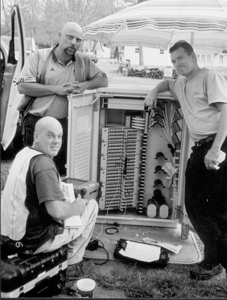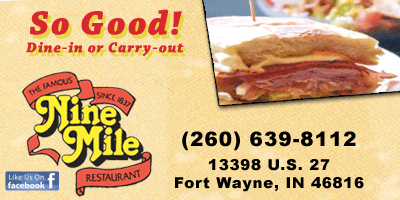HISTORY OF FIBER OPTICS

Fiber Optics is a branch of physics based on the transmission of light through transparent fibers of glass or plastic. These optical fibers can carry light (photons) generated by LED’s (light emitting diodes) from a few inches to hundreds or thousands of miles between continents. Such fibers work individually or in bundles and the individual fibers measure less than 0.00015 inches in diameter—thinner than a human hair. Optical fibers have a highly transparent core of glass surrounded by a covering called a cladding. Light impulses from a laser enter one end of the optical fiber. As light travels through the core, the cladding keeps the wavelengths inside and at the other end of the fiber a detector such as a photo sensitive device receives the light. Optical fibers have a multitude of uses. Industries use them to measure temperature, pressure, acceleration and voltage. Communication systems use lasers and fiber optics to transmit messages in digital code by flashing on and off at high speed that enables thousands of “streams” of data to pass through a single fiber optic cable at one time.
George Gilder stated in his book titled, Telecosm: “At the heart of fiber optic communications are lasers pure enough to carve a sliver of light into thousands of usable frequencies, gossamer glass threads carrying millions of times more information even though they are thousands of times smaller than copper cables, fiber strands made of glass so pure that if it were a window you could see through seventy miles of it. This is not futurism, for the science behind it is already history.”
In his book, Optical Communications, M. J. N. Sibley stated: A breakthrough occurred in 1960, with the invention of the ruby laser by T. H. Maimon, working at Hughes Laboratories, USA. For the first time, an intense, coherent light source operating at just one wavelength was made available. It was this development that started a flurry of research activity into optical communications. By 1963, bundles of several hundred glass fibers were being used for small scale illumination. By 1966 C. K. Kao and G. A. Hockman working at Standard Communications Laboratories in the UK postulated the use of glass fibers as optical communications waveguides.
Optical fibers are also well suited for medical applications because they can be made into extremely thin, flexible strands for insertion into blood vessels, lungs, and other hollow cavities of the body. Optical fibers enable physicians to look and work inside the body through tiny incisions. Instruments called endoscopes carry two bundles of optical fibers inside a long tube. One bundle directs light at the tissue being examined. The other transmits light reflected from the tissue back to a monitor that produces a detailed image. Optical fibers also have another medical use, they can be used to direct intense laser light that stops bleeding or burns away abnormal tissue. Not to mention optical fibers that can be used to measure temperature and other body properties or inserted into blood vessels to give quick accurate analysis of blood chemistry.
The first known medical endoscope was designed and built here in Fort Wayne, Indiana by Philo T. Farnsworth during the 1950s. According to Pem Farnsworth’s book, Distant Vision, on page 267, she stated: Gordon Knight, then assistant to Fred Wilson, the current president of Farnsworth Television & Radio, located on Pontiac Street, came to Phil one day with a problem. His brother, a well-known surgeon in Texas wanted to know if Phil could design a lighted device that could be put down a patient’s gullet to view the inside of his stomach? Gordon had heard of the one Phil designed for the Massachusetts General Hospital, but as far as we knew it had never been built.
Phil said he would have one constructed for Doctor Knight. When Gordon told his brother the device was finished, Dr. Knight lost no time in coming to Fort Wayne. As they were all in Phil’s office discussing the device, Dr. Knight asked Phil if he was sure it would work? Gordon spoke up and suggested they test it right there on Phil’s conference table. He volunteered his roommate Jim (not his real name) to be the subject of the test. Jim was not so sure he wanted to do this, but Gordon persuaded him.
The good doctor gave Jim some medication to deaden the nerves of his esophagus, and he stretched out on the conference table. With considerable difficulty they got the lighted instrument into Jim’s stomach cavity. Dr. Knight was delighted because for the first time ever he was actually seeing inside a living patient’s stomach.
“It looks very inflamed down there. Young man; were you drinking last night?” With a very pained expression, Jim gave a slight nod. “I thought so,” Dr. Knight told him. “But otherwise your stomach is in excellent shape.” Jim may never have forgiven Gordon for putting him through this, but he said at least he knew his stomach “was in fine shape.” Dr. Knight was grateful to Phil and told him he had a special patient who might now be spared a serious operation. When he offered to pay Phil anything he wanted, Phil told him it was pay enough to know he was helping some poor, suffering person.
- Shamrock Search Leads To Adventures In Waynedale - March 29, 2024
- Take A Journey Back To The Hundred Acre Wood - March 29, 2024
- Recognizing Green Book Sites In Indiana - March 29, 2024


